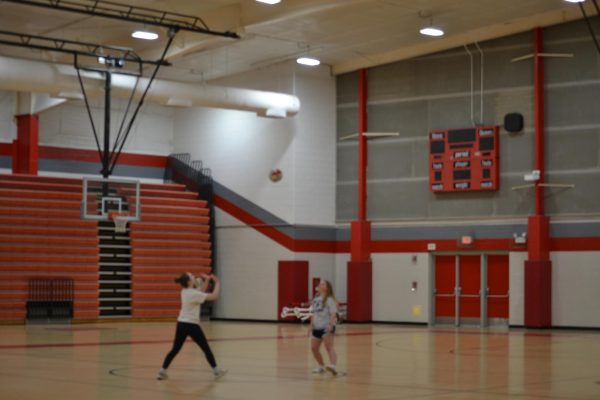The Pros and Cons to Asynchronous and Synchronous Learning
School in the year 2020 has revolutionized the way students in Fauquier County learn in many ways. Due to COVID-19, Fauquier has to teach students from home, using online synchronous and asynchronous learning methods. This type of learning seems to be useful, however, both methods have their downfalls as well.
Synchronous learning is a great method for students who like to work with people. It allows students to connect with classmates and teachers via Google Meet, Zoom, etc. They are able to speak and collaborate with others and ask questions. Teachers are able to present work and go over the material in front of students, allowing for a better understanding of the class material.
Synchronous learning gives students the chance to work in groups and do assignments that would normally be troubling for a single student. It helps students grow and keep social skills active even if the learning is done online. Social interaction also helps improve mentality for students because they can communicate and see everyone in the class even if it isn’t entirely like being in the classroom.
Synchronous learning is also good for classes that involve work to be done by speaking. Foreign language and Public Speaking classes really benefit from synchronous learning since students can present oral presentations through video chats. Synchronous learning has a lot of benefits but it is controversial for some students due to their experiences.
It can lead to video chats access issues or internet connection troubles. Students need internet connection to join virtual calls. Some don’t have this availability which causes them to commute to another location. With bad internet, students get kicked off of meetings and may miss important information, causing them to contact the teacher later. It can also affect the viewing of videos, sharing of screens and presentations due to lags. While it can be accessed through the phone’s cellular data, the downside is doing other work at the same time. Synchronous learning prioritized the necessity for strong connection, leaving lots of students with more work even before school starts.
Asynchronous learning has it’s fair share of issues as well. Students still need connection to accomplish assignments. Without internet, asynchronous learning isn’t possible on a computer. Bad connection and power outages cause webpages to load slowly, if at all, and hinders progress if connection is lost at any time, even forcing some students to redo certain assignments. If bad weather occurs, work is nearly impossible to do since internet connection is reduced greatly.
If the internet is working properly, the struggle turns into the teacher not being present to help explain any problems or questions. Emails are being used to contact the teacher during these asynchronous days, however, some don’t respond until an hour later since they are bogged down with emails throughout the day. It also isn’t very successful viewing assignments and other information on websites like Blackboard on a phone because it is extremely limited.
However, asynchronous learning can be really effective because it gives students access to the most important thing: time. Asynchronous learning allows students to learn and do assignments at their own pace. The time provided also allows students to strategically do work in whatever order works best for them.
Assignments can be completed without following one strict schedule, flexibility is now an option. Schoolwork can be done at any time of day as long as it’s turned in by the due date and time. Asynchronous learning also gives teachers a break from constant teaching in a classroom. Instead, they can instead provide material and answer any questions privately.
Synchronous and asynchronous learning both bring many benefits and challenges to learning. They are both entirely new forms of learning, for students and teachers, but everyone is making the most of it. One of the biggest concerns now is, will these forms of learning be permanent for a while, and will it be a pro or con for education?
Thanks for reading The Falconer. We're happy to provide you with award-winning student journalism since 1963, free from bias, conflicts of interest, and paywalls. We're able to continue with the generous support of our local community. If you're able, please consider making a donation. Any amount is incredibly helpful and allows us to pursue new and exciting opportunities.







